
The modern day hammer has had an incredible evolution since its origins when man needed to hit and smash shells or bones to get food. Initially. I thought a post about the evolution of the hammer may be interesting, but I’ve found that hammers are much greater than just a hand tool, they are literally the great grandfather of every tool ever made!
The basics;
A hammer is a tool for striking another object or substance, whether wood, metal, stone or anything else. The modern day hammer has many variations, looks and sizes. Creating an extremely versatile tool.
Then man created the hammer;
Archaeologists have now discovered the first appearance of a tool used as a hammer was 3.3 million years ago (149 found in Lake Turkana in northern Kenya in 2015) when a “hammer stone” was used to splinter more brittle stones like flint, into cutting and killing tools. After they began to perfect their technique, they formed and shaped axes, knives, then more intricate arrow heads and spear heads. Still later these proto-humans used the formed shards into carving tools for wood, to break open animal skulls, bones, shells and even make jewellery.
This embryonic hammer, was little more than a heavy elliptical stone between 300 grams to a kilo smoothly formed at the bottom of a river bed, or from the sea. The stone was used to hit an object, which was sitting on a large flat stone below it, like an anvil. If a more intricate point was needed, the stone hammer would be replaced with a smaller stone, bones, ivory and antlers using more finesse for finishing the new cutting tools.
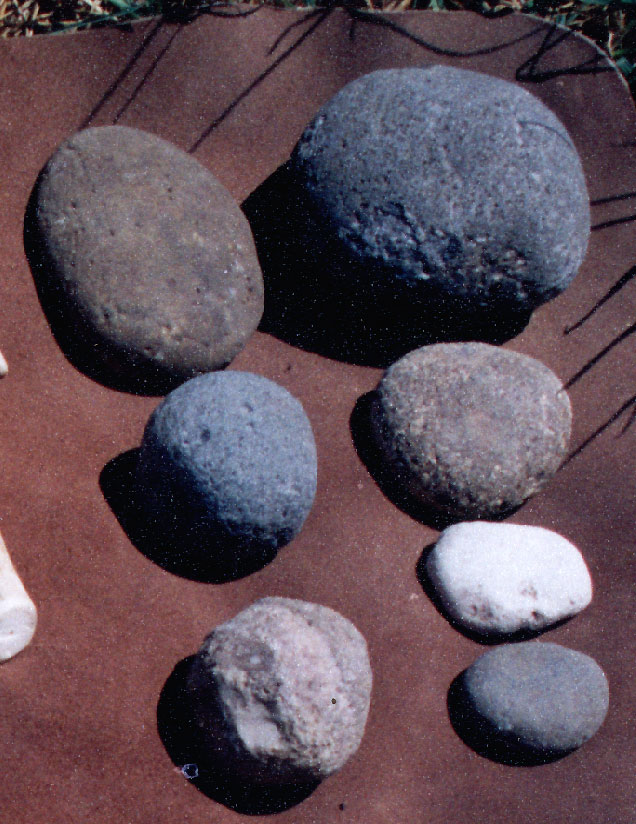
Image by Wikipedia and Makavot Even
Then around 30,000 BC, an incredible 3.27 million years later. The next stage of the hammer’s evolution came into being. The addition of a handle; the stone being tied to either a piece of wood or bone with leather, vine, sinew, hair or similar substance tying the head to the handle. Creating the more familiar modern day looking hammer, similar to those made by native americans in the 1800’s.
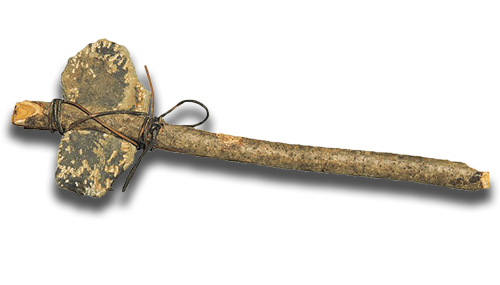
This addition may not seem a big one, but it enabled the user to have more control over what they were hitting, and the accuracy of the strike. It meant that this new hammer could be used for more intricate work and meant the creation of a more artisan society. With the advent of the handle this meant the hammers evolution to what we know today advanced exponentially. Having a handle also allowed the user to have less accidents with the wielded tool.Then hammer’s next advance was the coming of metal and the bronze age. Around 3,000 BC, 27,000 years after the last important update of the hammer. Hammer heads were forged with bronze, making them more durable as far as binding them was concerned. The first hammer heads were probably melted bronze bound with similar bindings to stones, and evolved with the onset of forging and casting processes. This allowed a hole to be put through the bronze to take the handle. With the invention of forges and casting other copper and bronze products were made including nails.
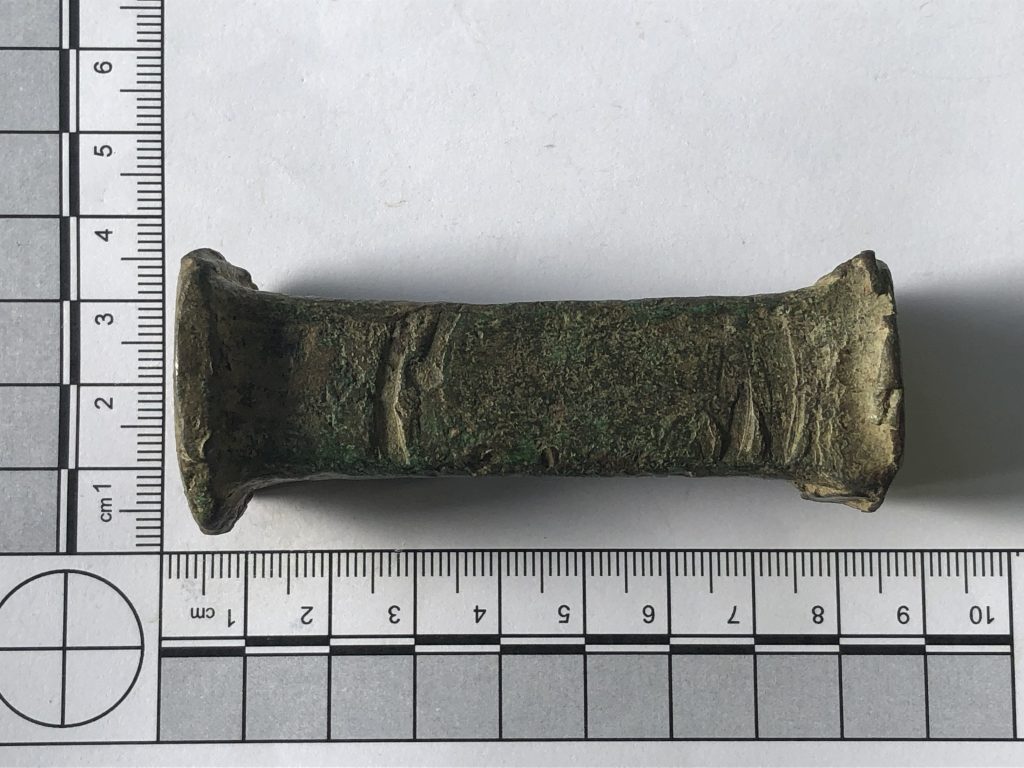
Bronze age hammer face. The hammer was fitted on to a piece of wood or bone, then used as a hammer.
Although iron was around in it’s raw form since the beginning of the bronze age, with meteroic iron. Which was found and used for tools such as hammers. It wasn’t until 1200 BC that iron was properly extracted and used to make tools and weapons. Making the old bronze hammers and equipment obsolete. Hammers started to evolve their shapes at this point in their history. Having round faces, square faces, cutting edges, reliefs, and so on. Among the new shapes of hammer the claw head was created for recovering bent or damaged nails for re-smelting. Also meaning you could reuse the precious iron or bronze nail.

Iron age (post medieval) hammer head.
Image from the british museum.
https://www.britishmuseum.org/collection/object/H_1982-0103-248
The discovery of Steel was the advent of modern day hammers and tools. From the unrecognisable embryonic eliptical stone of 3million years previously. Originally created around 1800 BC, but spread across the world properly in the 11th century. The process was refined and augmented by the 1500’s with the birth of today’s standard of steel making.
From 1500’s on the evolution of industry came the evolution of the hammer, during which the refining of hammer types and their nuances was developed and experimented with to make a different hammer that was ideal for each job. Coachbuilding, house building, brick layers,blacksmiths, masons, miners and any number of other jobs.
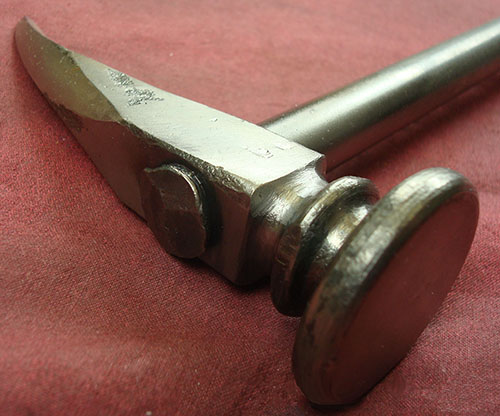
image by Langs
A copy of a steel headed and handled hammer. (circa 1760)
The Hammer’s produced next were “forged” by the industrial revolution starting in 1760 and 1870 the explosion in industry and the need for tools to repair and maintain the new machinery created. Also mass product of hammers, made them all similar and had to be produced to the same standards. These processes also meant that wood, rubber, copper, lead, brass, hide and broze hammers and mallets were easier to make and made more popular. With these new industries came bespoke hammer product such as larger moving and slogging equipment.
With the coming of the new century in the 1900’s came the invention of new materials; Bakelite, casin, and new metal alloys mean hammer faces and handles could be used in a new and different ways. With the development of physics to explain why a hammer works and man has learned to make it more efficient at its job, and so the development of the hammer has continued to become advance, along with its aesthetics. Leading to the modern hammer we see today, made by companies like Stanley, Thor and Estwing, all founded in the early 1920’s. These commercial companies essentially creating the sophisticated hammers the we still see today, from the invention of massive powered steam or electric hammers, to the smallest archeological or surveyor’s hammers.
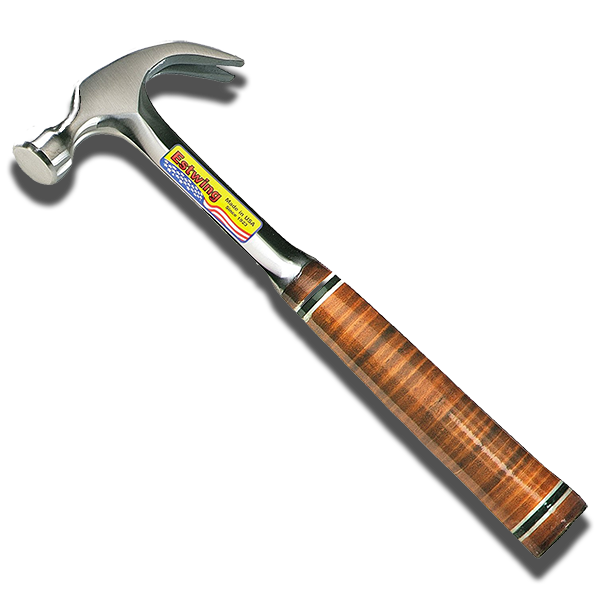
The modern claw hammer. Mass produced since the 1920’s
In the next post I shall go through the best modern hammers, who makes them and where to buy them.

very useful . Thank you very much
This article was very informative. I love hammers. They are very cool! Often times I use them to hit nails and it go BOOM. Its so rad. -xxx_The_Kool_Kid23_xxx
This article covered up almost all the information that I need for my academic assignment and knowledge. I truly and wholeheartedly thankful to you
very good, loved it. Help me so much.
Would you say that the hammer is a derivative of an early club? That the hammer as we know it evolved from prehistoric neanderthal cavemen’s clubs?
Definitely. Although the club being a weapon or tool of war rather than a creative work tool for shaping.
I really enjoyed this very informative very enjoyable to read very well written
thank you so much, this helped me alot with my work and i am very grateful to have found this webside
thank u v much i luv hammers w all that i am i am currently studying about hammers and how they behave because i am in the process of training my own
im looking into traditional ways of traingin him he is a good boy but not good enough and i feel the traditional method will provide me with the expectations i desire
do you have the number of a hammer trainer in or near essex? i would very much appreciate it
my hammer’s name is named pat if that helps
thank you for your time i rlly appreciate it
LOL Yeah, there’s a lot of places to train one’s hammer. However, never get it out or attack in public.
yes i am a professionally trained hammer trainer who lives in downtown Essex and I have been looking for more hammers to train. I would absolutely love to train your hammer and I would be honoured at the opportunity
Thanks for making this.
I LIKE HAMMER BEACUZE UGANDAN YOBUNGUS MAKE NAILS AND WALLS GO BOOM
Hammer Go Hit Bang Bang
hi
my name is burhan
i am looking for information about hammers
have the book name king of the tools
i saw another one which i can not remember the name ,,,maybe evolution of the hammer
i am looking for any help to find books about hammer and any other information
thanks
Thank you for your post. If you’re looking for physical books for hammer information then maybe the library could be a good a place to begin with? Definitely they will have reference to books you may find of interest. All the information on this blog has been cross referenced with National Geographic, wikipedia and many other references, so definitely these sources could be another place to look at for your information.
This is really good information I’m going to compare my product which is an evolution of an improvisation like the hammer for my pitch, thank you!!
The ideal answer
Hey I am so glad I ffound your website, I really found you by error,
while I was browsingg on Aol for something else, Regardless I aam here now and would just like to say thank you foor a fantastic post and a all round thrilling blog (I also love the theme/design), I don’t have time to browse it all at the mminute but I have book-marked it and also added your RSS feeds, so when I have time I will be back to read much more, Please do keep up the excellent work.
I’m amazed, I must say. Rarely do I come across
a blog that’s both educative and amusing, and let me
tell you, youu have hit tthe nail on the head.